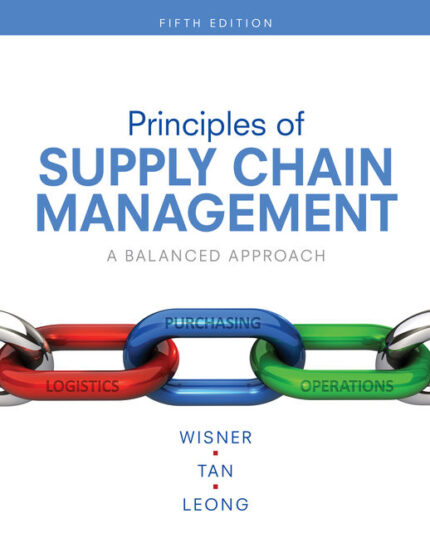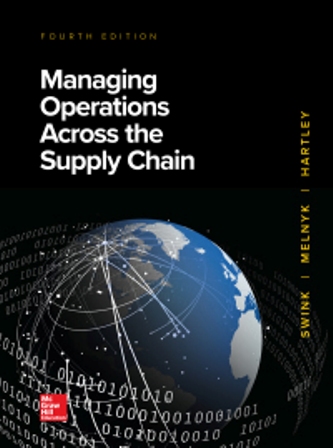Solution Manual for Operations Management 13th Edition by Stevenson
chapter 19
Linear Programming
Teaching Notes
The main goal of this supplement is to provide students with an overview of the types of problems that have been solved using linear programming (LP). In the process of learning the different types of problems that can be solved with LP, students also must develop a very basic understanding of the assumptions and special features of LP problems of management test bank.
Students also should learn the basics of developing and formulating linear programming models for simple problems, solve two-variable linear programming problems by the graphical procedure, and interpret the resulting outcome. In the process of solving these graphical problems, we must stress the role and importance of extreme points in obtaining an optimal solution.
Improvements in computer hardware and software technology and the popularity of the software package Microsoft Excel make the use of computers in solving linear programming problems accessible to many users. Therefore, a main goal of the chapter should be to allow students to solve linear programming problems using Excel. More importantly, we need to ensure that students are able to interpret the results obtained from Excel or any another computer software package.
Answers to Discussion and Review Questions
- Linear programming is well-suited to constrained optimization problems that satisfy the following assumptions:
- Linearity: The impact of decision variables is linear in constraints and the objective function.
- Divisibility: Noninteger values of decision variables are acceptable.
- Certainty: Values of parameters are known and constant.
- Nonnegativity: Negative values of decision variables are unacceptable.
- The “area of feasibility,” or feasible solution space is the set of all combinations of values of the decision variables that satisfy all constraints. Hence, this area is determined by the constraints.
- Redundant constraints do not affect the feasible region for a linear programming problem. Therefore, they can be dropped from a linear programming problem without affecting the feasible solution space or the optimal solution.
- An iso-cost line represents the set of all possible combinations of two input decision variables that result in a given cost. Likewise, an iso-profit line represents all of the possible combinations of two output variables that results in a given profit.
- Sliding an objective function line towards the origin represents a decrease in its value (i.e., lower cost, profit, etc.). Sliding an objective function line away from the origin represents an increase in its value.
- a. Basic variable: In a linear programming solution, it is a variable not equal to zero.
- Shadow price: It is the change in the value of the objective function for a one-unit change in the right-hand-side value of a constraint.
- Range of feasibility: The range of values for the right-hand-side value of a constraint over which the shadow price remains the same.
- Range of optimality: The range of values over which the solution quantities of all the decision variables remain the same.
Solution to Problems
- a. Graph the constraints and the objective function:
Material constraint:
6x1 + 4x2 ≤ 48
Replace the inequality sign with an equal sign:
6x1 + 4x2 = 48
Set x1 = 0 and solve for x2:
6(0) + 4x2 = 48
4x2 = 48
x2 = 12
One point on the line is (0, 12).
Set x2 = 0 and solve for x1:
6x1 + 4(0) = 48
6x1 = 48
x1 = 8
A second point on the line is (8,0).
Labor constraint:
4x1 + 8x2 ≤ 80
Replace the inequality sign with an equal sign:
4x1 + 8x2 = 80
Set x1 = 0 and solve for x2:
4(0) + 8x2 = 80
8x2 = 80
x2 = 10
One point on the line is (0, 10).
Set x2 = 0 and solve for x1:
4x1 + 8(0) = 80
4x1 = 80
x1 = 20
A second point on the line is (20, 0).
Objective function:
Let 4x1 + 3x2 = 24.
Set x1 = 0 and solve for x2:
4(0) + 3x2 = 24
3x2 = 24
x2 = 8
One point on the line is (0, 8).
Set x2 = 0 and solve for x1:
4x1 + 3(0) = 24
4x1 = 24
x1 = 6
A second point on the line is (6, 0).
The graph and the feasible solution space (shaded) are shown below:











